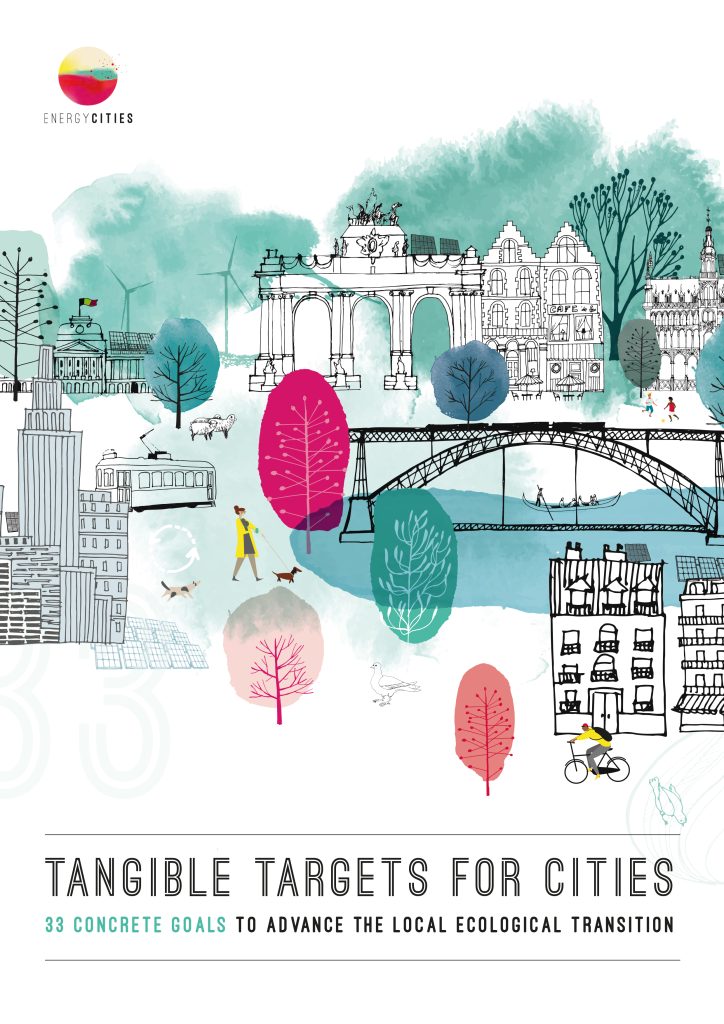Renovate 50 of every 1000 housing units…
And other tangible targets for more resilient and carbon-free neighbourhoods
Setting tangible targets can help accelerate and bolden your city’s transition. Citizens’ assemblies across Europe have shown us that if you get inspired by the concrete wishes and the visible changes that citizens want to see in their cities, it will lead to more ambitious measures. And, most importantly, to measures that citizens can understand and engage with, giving them more momentum and impact.
When talking about building more resilient housing and urban planning, cities often get caught up in precise calculations of carbon emissions and technical solutions. While acknowledging that this is essential to any city’s roadmap to climate neutrality, it’s also important to keep in mind how to translate such solutions into concrete measures that people can relate to. What visible transformations can people see in their own built environment? What changes can they see happening in their neighbourhoods and homes?
Find some examples of tangible targets for your city related to housing and urban planning, inspired by citizen assemblies, local pacts, and other projects across Europe.
Eco-districts cover 15% of the city surface area
Inspired by the EU City Calculator’s measure on building stock, we propose a target of 15% of the city surface area covered by eco-districts.
A very interesting case is the 2000-watt society project in Switzerland. The initiative began in the 1990s at the University ETH in Zürich and set a limit of the 2000 watts of continuous power (primary energy) available to each person. This is enough to ensure prosperity and a high quality of life. The concept has been translated into a label for “2000 watts sites” such as eco-districts.
Limit indoor temperature to 19 degrees
In its Energy Sufficiency plan, the French government has presented its plan for energy sufficiency in October 2022 and introduced the limit for heating to 19 degrees C during the day (and 16 degrees C during the night). This measure has been inspired by the recommendations of the NégaWatt associate in France.
The Covenant of Mayors Europe has proposed an energy saving sprint following the Russian invasion of Ukraine in 2022. In this context, the city of Berlin has taken many measures to reduce their energy consumption for heating in particular, such as reducing indoor temperatures to 20 degrees C in public buildings and 16 degrees C in occasionally used rooms and corridors.
30% increase in the number of roofs covered with high albedo coating
In Grenoble, citizens proposed to increase by 30% the number of light-colored buildings using high albedo coating (ranging from 0 to 1).
The city of Bari, in the South of Italy, is using greenery and high albedo coating in its mitigation strategy. Almost half of the buildings in the neighborhoods of Madonnella and Japigia are covered by albedo coating. The latest research on this topic suggested this solution can considerably reduce temperatures.
Renovate 50 of every 1000 housing units
Flanders is committing to renovate 5% of their housing units by 2030.
In this region, Leuven is already taking the lead: the city aims to renovate 1,000 homes and 150 other buildings per year by 2030. In order to achieve this goal, they established a one-stop shop to gather service providers of energy retrofitting, renewable energy and energy savings.
One m3 additional rainwater per citizen
Water scarcity is a crucial issue in cities. Thus, the Flemish pact aims to collect an additional 1m3 of rainwater per citizen.
Harvesting rainwater is common practice in Malta, which stands as one of the top 10 poorest countries in the world in terms of natural freshwater resource. The Reverse Osmosis process, implemented in Malta, collects water and stores it underground before it is provided to the inhabitants. The overall capacity of the island in term of rainwater collection is about 2 hm3.
Reclaim 870 dwellings from vacancy every year
To fight against land artificialization, the Grand Angoulême agglomeration decided to bring empty homes back into use at a pace of 80 units per year starting in 2016. The measure is part of a broader wasteland plan which focuses on “land sufficiency” to limit urban sprawl and achieve net land take.
In February 2023, the Portuguese government announced a “more housing” plan, focusing on vacant housing. According to the Prime minister, €150 million has been pledged to fund the credit line to municipalities to carry out the “works on vacant houses with low habitability conditions”.
More tangible targets for your city…
Are you looking to set ambitious targets for your city’s transition?
Find further inspiration in our Tangible Targets publication, which includes a comprehensive set of 33 targets spanning across food, housing, mobility, energy, biodiversity, circular economy, and awareness raising!
… Inspired by Citizens’ Assemblies
To compile this list, we largely drew inspiration from citizens’ assemblies focused on climate issues in various European cities. Many times, the measures debated and suggested in these assemblies are much more ambitious than the policies implemented. We hope that such measures inspire bolder and faster action in cities across Europe, putting the citizen at the center of the transformational journey towards a climate neutral and resilient future.

Tangible Targets for Cities: 33 goals to advance the local and ecological transition

